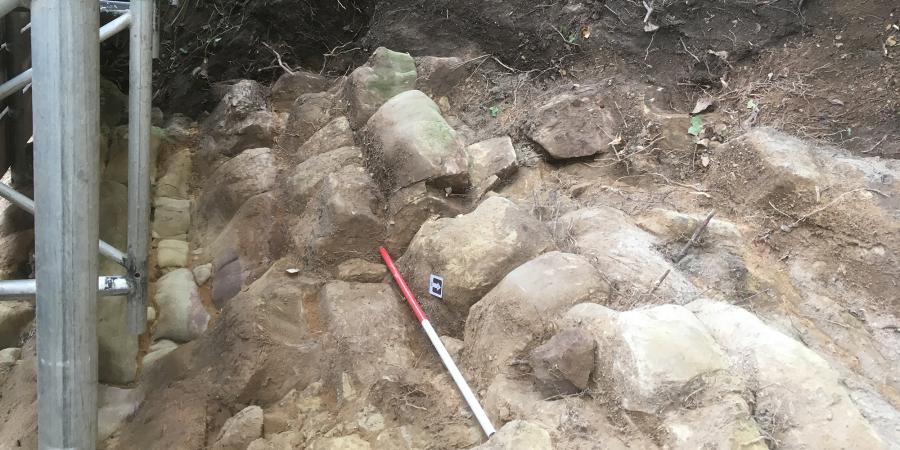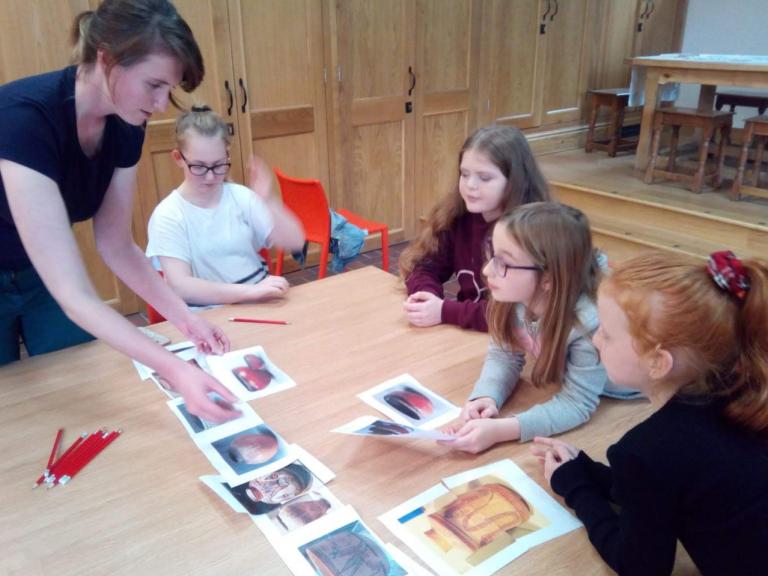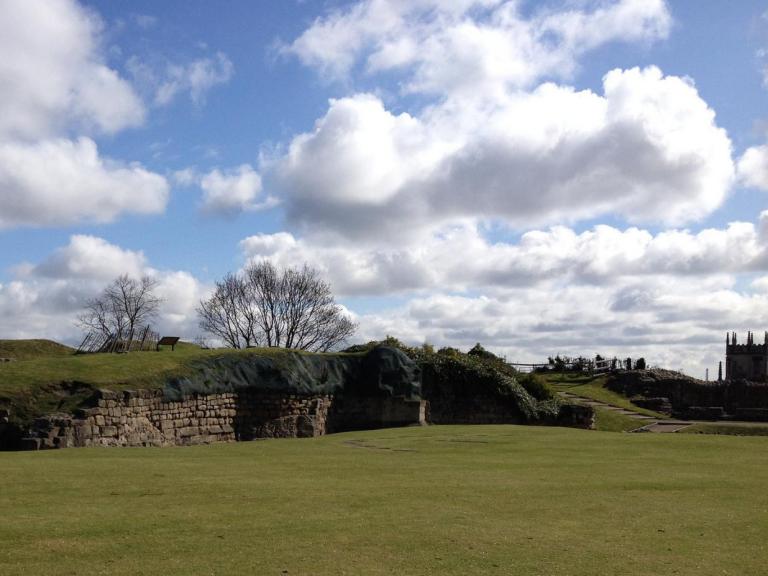Last week I had a change of scenery; as a human osteologist based in Wessex Archaeology’s Sheffield office, I was deployed to Pontefract Castle following the discovery of some potentially human bones.
The bones had been uncovered by workmen clearing earth and scrub from the exterior walls of the assumed 15th century King’s Tower during works on the ongoing HLF funded Pontefract Castle ‘Key to the North’ Project.
Upon arriving, I was led to the site where the precise location of the bones were found – 15 foot up the exterior wall of the Kings Tower. Luckily the bones had been carefully carried down the scaffolding and ladder, so I could examine them properly.
They were indeed human, likely to be between 1,000 and 500 years old, and comprised most of a right femur and part of a probable ulnar fragment. The femur had very obvious marks on its cortical surface, most probably caused by the tools used to exhume the bones.
The Kings Tower is located very close to the ruins of an Elizabethan chapel and an 11th century predecessor, and so it is possible that the bones were accidentally disinterred during Victorian ground works. It appears that the exterior castle walls at the location of the Tower were shored up with earth in the 19th century, with the material feasibly taken from close by.
The presence of human remains would indicate that the soil came from the area of chapels within the castle walls, or alternatively from the area of a ruined Saxon church immediately east of the Kings Tower on The Booths, or less likely the churchyard of the late 11th century All Saints Church further to the east.
The bone fragments could have been unintentionally included with the earth removal, and were redeposited at height against the castle walls. It is hoped that that the bones will be reburied on consecrated land within the site following further archaeological works.




